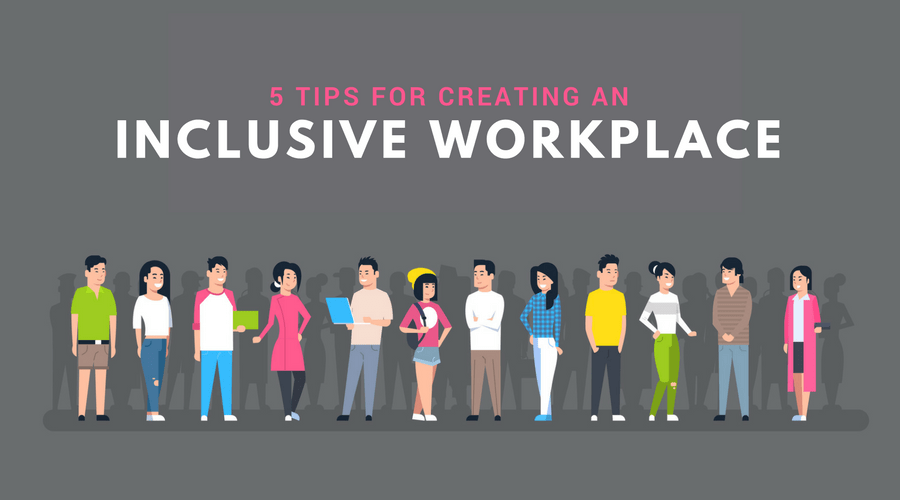5 Tips for Creating an Inclusive Workplace

You’ve taken steps to create a more diverse workforce. Congratulations! That’s a great place to start. But, are you taking steps to make sure your new employees feel welcome and included. Just because you have a diverse workforce, doesn’t mean you have an inclusive workplace.
If you don’t create an inclusive workplace, then your new hires may feel like they were hired just because they were a minority, not because they have valuable skills and experience to add to your company. If they feel that way, they’ll start to leave. You should create an environment that acknowledges that each of your employees brings valuable and unique experiences to the table.
Having an inclusive workplace gives everyone the opportunity to contribute and share their unique perspectives.
You won’t be able to create an inclusive work environment overnight. It takes planning, work, and commitment from everyone on your team. There are steps you can take to start building a workplace where everyone feels included.
Be Flexible
Be open to changing your workplace policies and benefits if they don’t work for everyone in your company. When you start growing your workforce, listen to your employees and find out what they really need.
For example, maybe you give new parents some time off. Right now, that might not include parents who adopt. A lot of LGBTQ couples choose to adopt when they start a family, so consider broadening your policy to include giving time off for new adoptive parents.
Constantly Reevaluate
Regularly check in with your employees (all your employees, so no one feels singled out) and ask for feedback. Make sure they feel included and like they have the same opportunities as everyone else.
If new hires keep leaving, find out why. Conduct exit interviews to help find out if there’s something you can do to make them feel more included.
Leave Your Assumptions at Home
Everyone makes assumptions. It’s just natural, but assumptions lead to misunderstandings, biases, and wrong conclusions. The best way to stop making assumptions is to start paying attention to when you’re making them.
The next time you realize you make an assumption (about anything), stop yourself. For example, maybe you’re going to ask Sally to pick up an extra task, but assume that she’s too busy. Instead of asking someone else, ask Sally first. Even if she confirms your assumption, you now know for sure.
Get to Know Your Team
A great way to break down walls and make the office feel welcoming is to get to know your team on a personal level. Getting to know someone personally, instead of only ever talking to them about work, will help you move past your assumptions and biases.
Encourage your team to also get to know each other on a personal level. Challenge them to go talk to someone outside their department and mix things up. If your office space and setup allows for it, encourage your employees to pick up their laptops and go work in an entirely different part of the office occasionally. Working near people they don’t normally work with can help form new bonds.
Invest in Diversity Training
Most biases are subconscious, so your employees might not even realize they have them. If your employees don’t go through diversity training, those biases will continue to exist in your workplace.
So, set up some diversity training sessions to start an open conversation about biases that exist in your office. Key topics to cover include:
- recognizing that everyone interprets the world through their own experiences,
- overcoming stereotypes,
- how to overcome cultural barriers, and
- how to respect differences.
You can also talk with your employees to determine what topics should be covered.


